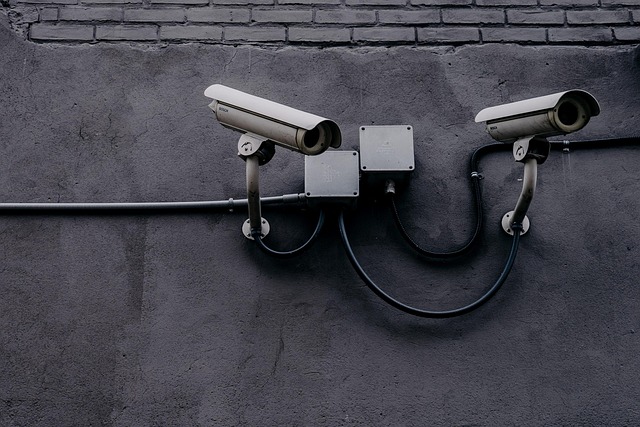Live video streaming has transformed global communication and content consumption, benefiting entertainment, education, and security sectors with unedited, real-time video content accessible via stable internet connections. Real-time video surveillance apps offer unprecedented convenience, enhancing security by allowing remote monitoring of homes, businesses, or public spaces. While these technologies bring significant benefits, they also raise privacy concerns; robust encryption, user authentication, and regular updates are crucial to protect data from hackers. Future trends include high-quality, seamless streaming experiences tailored for diverse users, integrated AR/VR technologies, cloud-based platforms, personalized content delivery, and adaptive streaming for optimal viewing across all devices.
Live video streaming has transformed how we connect, share moments, and access information. With advancements in technology, mobile and desktop apps have democratized real-time video surveillance, making it accessible to everyone. This article delves into the basics and benefits of live streaming, explores popular mobile and desktop apps, discusses security and privacy considerations, and highlights best practices along with future trends in this dynamic field.
Understanding Live Video Streaming: The Basics and Benefits
Live video streaming has transformed the way we communicate and consume content, offering a dynamic and immersive experience. At its core, live video streaming involves transmitting unedited video content in real-time over the internet from a broadcaster to viewers worldwide. This technology has revolutionized various sectors, including entertainment, education, and security. With just a stable internet connection and a device, users can witness events as they unfold, fostering a sense of immediacy and interaction.
The benefits of live video streaming are multifaceted. It enables real-time video surveillance, allowing businesses and individuals to monitor activities remotely. In the context of mobile and desktop apps, this means capturing and sharing moments instantly, whether it’s a live concert, a sports event, or a simple vlog. Additionally, live streaming facilitates interactive communication, where viewers can engage with the broadcaster through chat features, comments, and Q&A sessions, creating a more personalized and involved audience experience.
Mobile and Desktop Apps for Real-Time Surveillance
Mobile and desktop apps have transformed the way we interact with technology, bringing real-time video surveillance to the forefront of convenience and accessibility. These applications allow users to capture and transmit live video feeds from their mobile devices or computers, offering a wide range of possibilities for personal and professional use.
With just a few taps on a smartphone or a click on a web browser, individuals can now monitor their homes, businesses, or public spaces remotely. Real-time video surveillance apps provide an immediate visual connection, empowering users to respond swiftly to any situation. This technology is especially valuable for security purposes, enabling quick identification and response to potential threats, while also aiding in crime prevention and evidence collection.
Security and Privacy Considerations in Live Video Streaming
Live video streaming has become a powerful tool, offering users the ability to share moments in real-time. However, as this technology continues to evolve and gain popularity, it’s essential to address security and privacy concerns. When broadcasting live content, whether through mobile or desktop apps, personal information and sensitive data can be vulnerable. Hackers and malicious actors can exploit streaming platforms to gain access to private conversations, steal personal details, or even launch cyberattacks.
Implementing robust encryption protocols is a game-changer in ensuring the security of real-time video surveillance. End-to-end encryption ensures that only authorized parties can access the video feed, maintaining the privacy and confidentiality of users. Additionally, platforms should provide options for user authentication, allowing viewers to log in securely and preventing unauthorized access. Regular updates and patches are also crucial to fix any identified security flaws, ensuring a safe streaming environment.
Best Practices and Future Trends in Mobile/Desktop Streaming
The future of mobile and desktop streaming lies in seamless, high-quality experiences that cater to diverse user needs. Best practices involve optimizing for low latency, ensuring stable connections even in challenging network conditions, and prioritizing data efficiency to accommodate varying bandwidths. Interactive features such as real-time chat, polls, and Q&A sessions enhance viewer engagement.
Trendsetters in the industry are exploring innovative formats like augmented reality (AR) and virtual reality (VR) overlays on live streams, blurring the lines between physical and digital experiences. Cloud-based streaming platforms will continue to grow in popularity due to their scalability and reliability. Additionally, personalized content delivery and adaptive streaming technologies will become standard, ensuring optimal viewing experiences for all users regardless of device or location.
Live video streaming via mobile and desktop apps has transformed the way we connect and monitor our world, offering unparalleled access and insights through real-time video surveillance. As technology advances, these platforms continue to evolve, providing enhanced security features and more intuitive user experiences. By adopting best practices and staying informed about emerging trends, individuals and organizations can leverage the power of mobile/desktop streaming for improved safety, efficiency, and communication.
